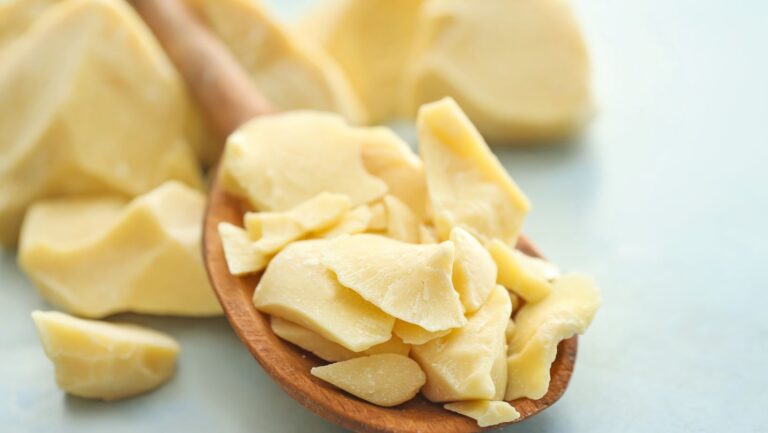Butter production has evolved significantly, with automation playing a pivotal role in enhancing efficiency, quality, and scalability. Embracing automation not only streamlines operations but also positions dairy businesses to meet growing consumer demands effectively. This article explores the benefits of automating butter production and outlines the essential butter processing equipment to consider for a successful transition.
Why Automate Butter Production?
Automation in butter production offers numerous advantages that can transform your dairy operations. Here are the key reasons to consider automating your butter production process:
Enhanced Efficiency and Productivity
Automated systems can operate continuously, handling multiple tasks simultaneously without the limitations of manual labor. This leads to higher production rates and minimizes downtime, ensuring that your butter production meets market demands promptly.
Consistent Quality
Maintaining uniform quality is crucial for building brand reputation and customer loyalty. Automation ensures precise control over various production parameters such as temperature, mixing speed, and processing time, resulting in consistently high-quality butter batches.
Cost Reduction
While the initial investment in automation may be significant, the long-term savings are substantial. Automation reduces labor costs, minimizes waste through precise measurements, and optimizes resource utilization, leading to improved profit margins.
Improved Safety
Automated butter processing equipment reduces the need for manual handling of heavy machinery and raw materials, lowering the risk of workplace accidents. Enhanced safety protocols inherent in automated systems ensure a safer working environment for employees.
Scalability
As your business grows, automated systems can easily scale to accommodate increased production volumes. This flexibility allows you to expand your product offerings and enter new markets without compromising on efficiency or quality.
Data-Driven Insights
Modern automated systems come equipped with data collection and analysis capabilities. These insights help in monitoring production performance, identifying bottlenecks, and making informed decisions to optimize processes further.
Key Butter Processing Equipment for Automation
Investing in the right butter processing equipment is essential for a seamless automation journey. Below are the critical machines and technologies that form the backbone of an automated butter production line.
Automated Butter Churns
Butter churns are fundamental to the butter-making process. Automated butter churns enhance efficiency by consistently agitating cream to separate butterfat from buttermilk. These machines offer programmable settings to accommodate different butter types and ensure optimal yield and quality.
Features to Look For:
- High capacity and throughput
- Adjustable agitation speed and duration
- Easy-to-clean designs for hygiene compliance
Pasteurizers
Pasteurization is vital for eliminating harmful bacteria and extending the shelf life of butter. Automated pasteurizers provide precise temperature control and uniform heating, ensuring that the cream is safely processed without compromising its quality.
Benefits:
- Consistent pasteurization results
- Energy-efficient operations
- Automated cleaning cycles for maintaining hygiene standards
Homogenizers
Homogenization ensures a smooth and stable butter texture by breaking down fat molecules in cream. Automated homogenizers deliver uniform fat distribution, enhancing the product’s mouthfeel and preventing separation.
Advantages:
- Improved texture and consistency
- Enhanced flavor retention
- Reduced fat globule size for better stability
- Butter Molding and Cutting Machines
After churning and homogenizing, butter needs to be shaped and cut into desired forms.
Automated molding and cutting machines streamline this process, producing uniform blocks or pats with minimal waste and high precision.
Key Features:
- Adjustable molds for various shapes and sizes
- High-speed cutting for increased production
- Integration with packaging systems for seamless operations
Packaging Machines
Efficient packaging is crucial for preserving butter quality and ensuring consumer convenience. Automated packaging machines handle wrapping, sealing, and labeling, enhancing product presentation and extending shelf life.
Types of Packaging Equipment:
- Wrapping machines for individual or bulk packaging
- Vacuum sealing machines to prevent oxidation
- Labeling systems for branding and regulatory compliance
Conveyor Systems
Conveyor systems facilitate the smooth movement of butter through different processing stages. Automated conveyors reduce manual handling, speed up production, and ensure a streamlined workflow.
Benefits:
- Enhanced production flow
- Reduced labor costs
- Increased operational efficiency
Quality Control Systems
Maintaining high-quality standards is essential in butter production. Automated quality control systems monitor various parameters such as temperature, fat content, and texture, ensuring that the final product meets specified standards.
Components:
- Sensors and probes for real-time monitoring
- Automated sampling and testing mechanisms
- Data analytics for quality assurance and process optimization
Implementing Automation: Ideal Practices
Successfully automating butter production involves strategic planning and execution. Here are best practices to ensure a smooth transition:
Assess Your Production Needs
Begin by evaluating your current production processes to identify areas where automation can deliver the most significant benefits. Understanding your specific needs will help you select the appropriate butter processing equipment and technologies.
Select the Right Equipment
Choose butter processing equipment that aligns with your production capacity, quality requirements, and scalability goals. Consider factors such as compatibility with existing systems, ease of integration, and the reputation of equipment manufacturers.
Train Your Workforce
Automation shifts the roles of employees from manual tasks to more technical and strategic responsibilities. Invest in training programs to equip your workforce with the necessary skills to operate and maintain automated systems effectively.
Ensure Regular Maintenance
Automated equipment requires regular maintenance to function optimally and prevent unexpected downtime. Establish a maintenance schedule and collaborate with equipment suppliers to access technical support when needed.
Monitor and Optimize
Leverage the data generated by automated systems to continuously monitor production performance. Use these insights to identify inefficiencies, optimize processes, and implement improvements that enhance overall productivity and quality.
Overcoming Challenges in Automation
While the benefits of automation are substantial, it’s essential to address potential challenges to ensure a successful implementation.
High Initial Investment
The upfront cost of automated butter processing equipment can be a barrier for some businesses. However, the long-term savings and increased productivity often offset the initial expenses. Consider financing options or phased implementation to manage costs effectively.
Integration with Existing Systems
Integrating new automated equipment with existing production lines can be complex. Careful planning and collaboration with experienced equipment suppliers can facilitate a smooth integration process, minimizing disruptions to ongoing operations.
Change Management
Transitioning to automation may require changes in workflow and company culture. Effective change management strategies, including clear communication and employee involvement, can help ease the transition and foster a positive attitude towards automation.
The Future of Automated Butter Production
Advancements in technology continue to shape the future of butter production. Emerging trends and innovations are set to further enhance the capabilities of butter processing equipment, driving continuous improvement and efficiency.
Artificial Intelligence and Machine Learning
AI and machine learning technologies are being integrated into automated systems to enable predictive maintenance, real-time quality monitoring, and advanced data analytics.
These technologies enhance decision-making and optimize production processes.
Internet of Things (IoT)
IoT-enabled butter processing equipment allows for seamless connectivity and data exchange between machines. This interconnectedness facilitates better monitoring, control, and coordination of the entire production line.
Sustainable Automation
Sustainability is gaining prominence in the dairy industry. Future butter processing equipment is likely to focus on energy efficiency, waste reduction, and eco-friendly materials, aligning with consumer preferences for responsibly produced products.
Customization and Flexibility
As consumer demand for diverse butter products grows, automated systems will offer greater customization and flexibility. This allows producers to efficiently create a wide range of butter varieties, such as flavored butters and organic options, without compromising on quality or efficiency.
Conclusion
Automating butter production is a strategic move that offers numerous benefits, including enhanced efficiency, consistent quality, cost savings, and improved workplace safety. By investing in the right butter processing equipment and adhering to best practices, dairy producers can streamline their operations, scale production, and maintain a competitive edge in the market.
Embracing automation not only addresses current production challenges but also prepares your business for future growth and technological advancements. As the dairy industry continues to evolve, automated butter production systems will play a crucial role in ensuring sustained success and innovation.






